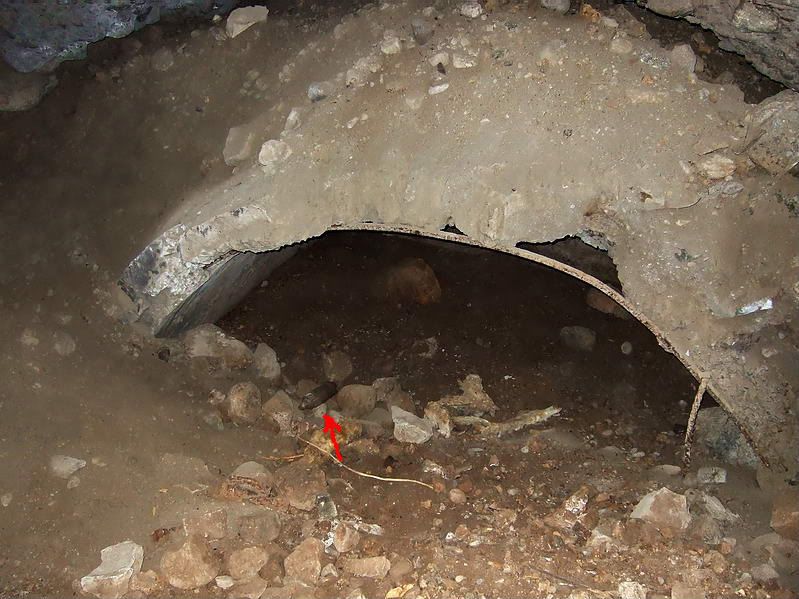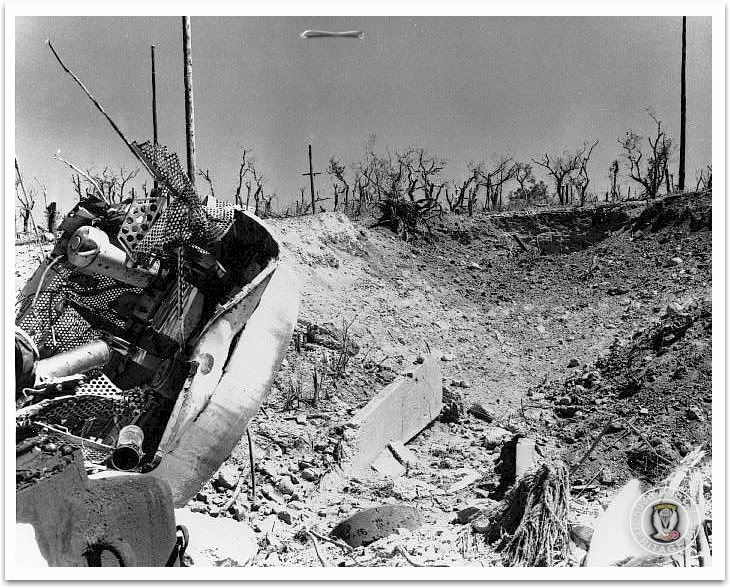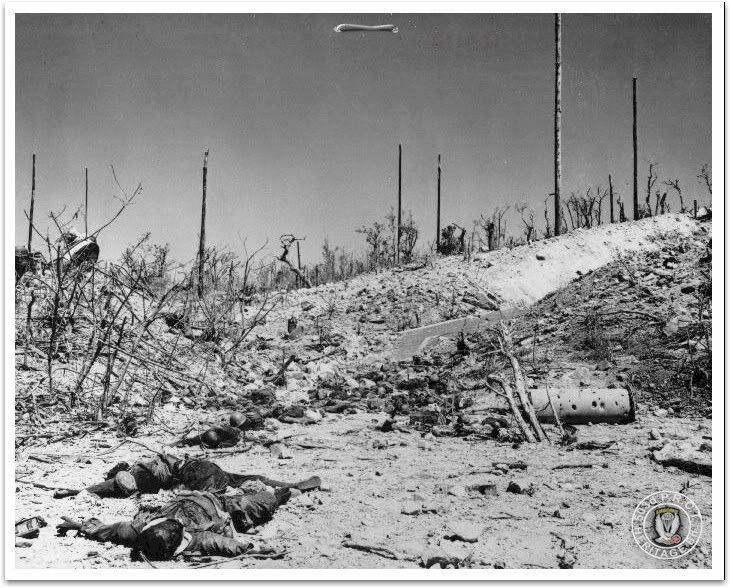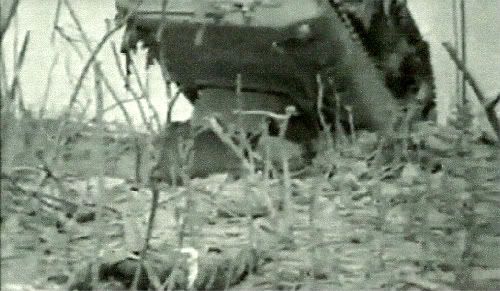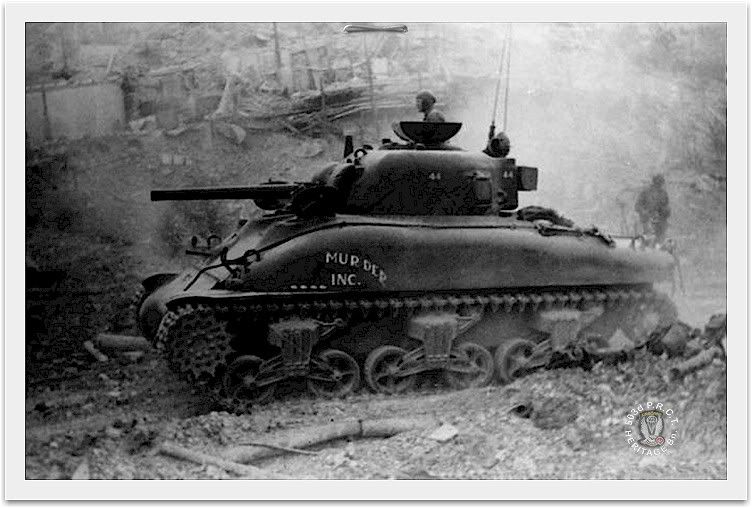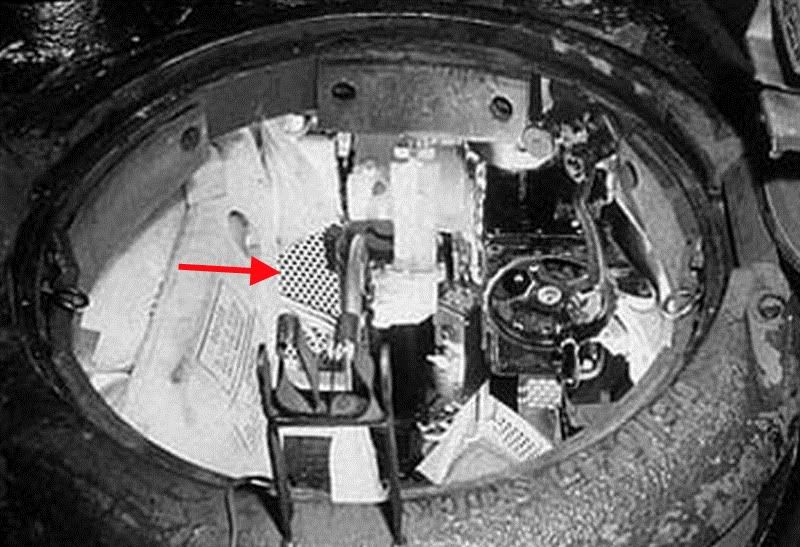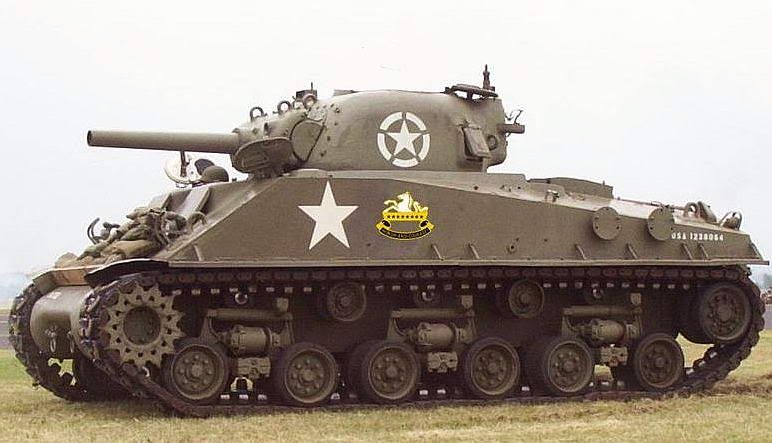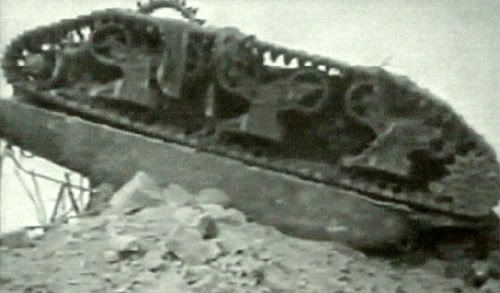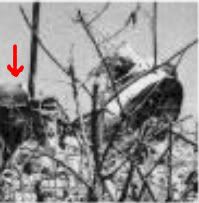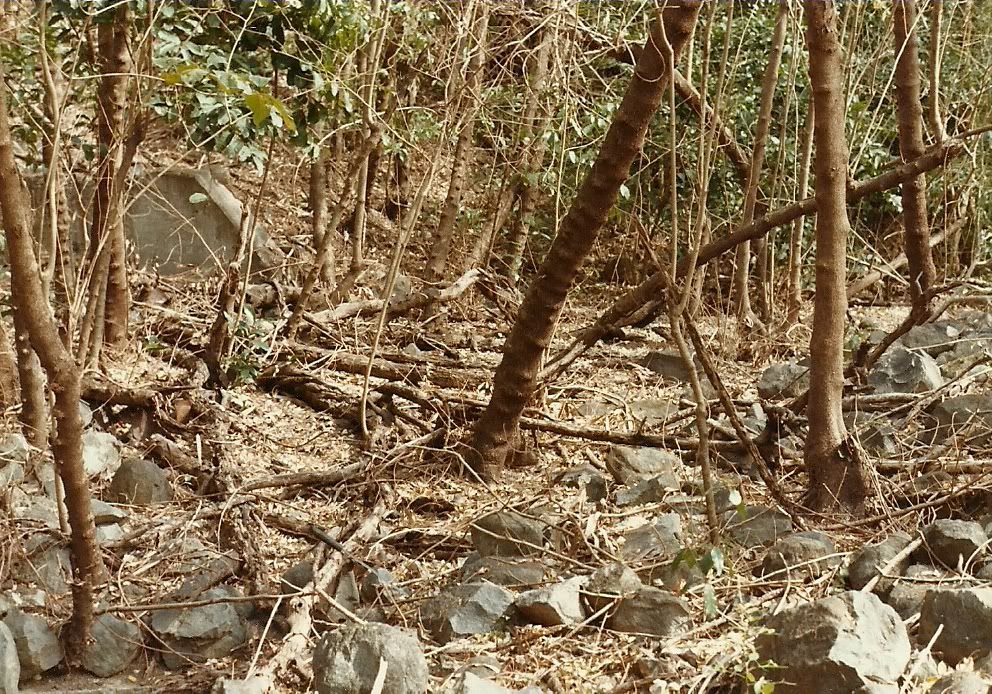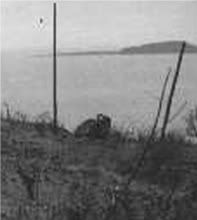Post by fots2 on Apr 24, 2011 9:49:12 GMT 8
Most guys who are intrigued by Corregidor history have always been interested in this WWII top secret station. To them, Station CAST and Tunnel Afirm are not new subjects. As for others including the thousands of yearly visitors to the island, few even know if its existence. The day tour buses rarely make it as far east as Kindley Field and if they do, little or nothing is told to them as they pass by this tunnel.
Imagine the possible outcome to the battles of the Coral Sea and Midway if the US did not know the Japanese plans in advance. Highly classified Japanese military and diplomatic messages were received, decoded, translated and then forwarded to US brass from this facility located near Monkey Point. Is this not worthy of even passing mention during a day tour? There is much more to Corregidor than the big guns.
I won't go into much detail on the history of this station. Detailed information is easily available from books and on Internet sites such as Corregidor.org.
Today, the remnants of Station CAST are a bit of a mystery to many. Adding to the mystery is that none of the structures are shown on any of the detailed Corregidor maps. The reason is simple, the latest map was produced in 1936 and the Navy radio project was not started until 1939. Station CAST became operational on October 17th of that year.
Hotel guides tell me that the tunnel and area are very rarely visited. They know of no one in the tunnel for a of couple years now. Perhaps this is due in part to the tunnel being one of the more difficult ones to get in, and more importantly, to get out of. The rumour of cobras inside seems to also keep some people away. Even the surrounding area is not friendly to the occasional visitor. Trees, vines and thorny plants are everywhere. With the exception of the South Shore Road, none of the roads and paths are clear anymore.
The massive tunnel explosion on Feb.26 1945 did destroy much of the tunnel plus virtually strip the surrounding area. Photos from that time show some large antenna poles and shattered trees to be the only objects still standing. Although much was destroyed, in this trip report I will show you what remains of this important site in Corregidor history.

1945 photo of the devastated Monkey Point. Caballo Island and the coastline of Cavite are in the background. (Photo courtesy Corregidor.org)
So where is this this tunnel actually located? Here are few maps from various publications.

Map from 'Saga of a Fortress'

Map from 'American Defenses of Corregidor and Manila Bay 1899-1945'

Map from 'Intercept Station C From Olongapo through the Evacuation of Corregidor 1929-1942'

Map source unknown
The above maps from these highly regarded books all have something in common, they are all WRONG. The tunnel is actually located further north and passes under the South Shore Road.
In 1990, Don Abbott and Ed McCarthy produced a map after completing their extensive explorations. By far, this is the most accurate tunnel map of what exists today. I would recommend reading their account posted on Corregidor.org at: www.corregidor.org/heritage_battalion/abbott/navytunnel.html

The 1990 map. (Don Abbott and Ed McCarthy)
On a few occasions I have wandered around the Monkey Point area exploring and collecting GPS waypoints for each item of interest. What remains today basically encompasses the tunnel, remnants of quarters buildings and the bases of large antenna poles. To date, I have located 17 of these poles but more probably exist. This hillside must have looked like a pin cushion from the air. The handball courts, a brick/concrete oven from a field kitchen and traces of a road can still be seen also. Not much else remains unless you count broken chunks of concrete.

2011 labeled map. Although the location of each item is accurately recorded via GPS, I have no way to place the waypoints on this old map. Using reference points, this was done manually but the results are reasonably accurate.
As usual, various drawings of the actual Tunnel Afirm interior do not completely agree. I can confirm the general tunnel shape but the only object remaining inside is a mangled steel doorway. Here are some tunnel interior drawings.

Drawing from 'Intercept Station C From Olongapo through the Evacuation of Corregidor 1929-1942'. The short laterals at the far left are not drawn to scale.

Drawing source unknown. The short (top left) lateral is missing.

Drawing from 'Day of Infamy'. (Thanks to okla for sending this to me).
Although this is the most detailed drawing, the tunnel section from the 'Main Entry' to the lateral on the left is definitely too short. Other drawings have this shown correct. The road passes over this section of tunnel.
Driving east towards Kindley Field on the South Shore Road (sometimes called the Monkey Point Road), few people notice a little dip in the road. You have just passed over a collapsed portion of the Navy Radio Intercept tunnel between the Main entrance and the big air shaft.

Notice the dip in the road and guardrail. This view is looking west.
I'll start at the top of the 1990 map and we will work our way down to the two Handball Courts. You may find it useful to refer to that map when looking at these photos.
First is the Panama mount of Battery Levagood. It was a concrete mount for the 155mm (6.1 inch) GPF coastal defense gun. The wheels of the gun sat on the inner ring and the rear of the gun sat on the outer ring. A rail embedded in the concrete assisted in positioning.

Looking across one of Battery Levagood's Panama mounts.

Close-up view of the rail embedded in the outer ring.

This old photo shows the gun being fired as it sits on its mount.
It is less than a one minute walk to the destroyed back entrance of the tunnel. A portion of two slanted walls of the walkway can be seen here but mostly you just see chunks of broken concrete. The map shows a wooden pole which is still there. A small crater at the base of more concrete is the actual collapsed entrance. The crawl hole is long gone.

Wooden pole and chunks of concrete. The little crater and former crawl hole is further to the left.

The crawl hole was here.
It is time to enter the tunnel so lets walk over to the side entrance. Today this is the only access point to the tunnel. Walking down the road and up the concrete walkway is the easiest way to get there.

The walkway up to the side entrance.

At the top of the steps, turn right and you will see this walled walkway heading down into a crater at the base of the hillside.

On approaching the crater you will see a hole not much higher than a man's chest at the base of the cliff. This is the entrance we will slide in today. Karl and EXO are my companions; I would not enter this tunnel alone.

Looking straight down the hole into the tunnel.
The vertical drop from the entrance is approximately five feet. Slide in and when your feet touch the leaves you are at the top of a long 45 degree downward slope. Using a rope will help a lot to get you down and back up the loose rock safely. Anyone at the bottom had better take cover from falling debris if someone is above them. This long rocky slope is the collapsed roof of the steep staircase from the side entrance down to tunnel level.

View up the long rocky slope from the bottom. Light from the entrance can be seen at the top. It does not look very steep in this photo but it is. Note the rope at the bottom.
I am now standing above what would have been the base of the staircase. I say 'above' because the roof has collapsed and I am standing on rubble that is several feet above the original tunnel floor. This is obvious as I have to look down at the concrete arches of two short laterals that are on both sides of me. The tunnel is dry and the air is good so no problems so far.

I moved down a few feet to get this photo of the short lateral on the right.

The view further down looking into the lateral. The rear is intact. It is empty now except for a few rocks.
The longer lateral on the left is well below the level of the debris. A slit entrance is narrow but I see no problem to prevent me from entering. After hearing and reading what people had said about this 'totally destroyed' tunnel, again, I am surprised to see a mostly intact lateral. Imagine the top secret activity in here when CAST was fully operational. On the floor lies a mangled metal door frame.

Looking straight down into the longer lateral on the left.

Inside this lateral is a metal door frame. You can see a hinge on the top.
Back out in the big lateral, I move forward towards the main tunnel. The amount of fallen debris has decreased so I am walking just above the tunnel floor; the concrete arch in front of me is almost at eye level now.

Damaged tunnel roof. The walking is uneven but easy. The hazard at the moment is lots of sharp rebar sticking out. Remember it is pitch black in these tunnels, camera flash photos are deceiving.

This is the end of the side lateral. The main tunnel is just past the little mound of debris.

The view when standing in the main tunnel looking in the direction of the back entrance. To the left is the intersection of the main tunnel and the concrete lined lateral. The concrete lining of the main tunnel is gone and the ceiling now has a barbequed look to it.

The view when walking towards the rear entrance.

Further on, some of the concrete lining is still there but broken in many places. You can slide through this narrow spot into another open area but the tunnel soon ends abruptly in a full collapse. I cannot see any remnants of the rear entrance or where a crawl space noted on the 1990 map used to be.

Back at the main tunnel/lateral intersection, here is a look at what we see looking towards the main entrance. Note the bent metal sticking down from the ceiling.

Close-up view of the bent metal.
The Don Abbott article (link up above) says this bent metal was the diesel exhaust vent but I don't buy that. I see two solid metal rods connected by a piece of metal. (Note the two rods at the end of it). The blast coming from the main entrance would have been from left to right in the photo. Why not a sharp bend if it is just crumpled pipe? The 90 degree bend looks like what I would expect to see if metal rods were bent, not a hollow pipe. On the surface near where this piece of metal would appear is a metal pipe. Perhaps this is why Don thinks what is down below is the remains of it. I may be wrong, what do you guys think?

The metal pipe on the surface.

Going a bit further you see some light and feel a breeze. Here is the large airshaft. It is impossible to know how much deeper it goes.

Standing near the base of the tall shaft and looking up. The void around the shaft being caused by blast pressure blowing out loose fill is quite believable.

View of the air shaft at the surface. There is a metal rung ladder down the inside of the shaft but it does not look very solid these days.

This view of the air shaft shows how close it is the South Shore Road. The main tunnel entrance was on the other side of the road where today, a large crater exists.
Continuing on from the air shaft, you cannot go much further south. At that spot I am probably at the northern edge of the South Shore Road.

As far you can go towards the Main Entrance.
Unfortunately I did not notice if the pipe we see here is just a section sticking up or it continues up through the ceiling. This is definitely not the same pipe that we earlier saw on the surface. It is located on the opposite side of the airshaft. Books mention two pipes in this tunnel, one for diesel exhaust and one for air-conditioning exhaust. I can't say which one this is.
Having seen all that we can for now we head back to the surface. Going up the 45 degree slope is not bad but the last vertical bit makes you work for a moment. It is a bit awkward with not much to hold onto. Little elbow room means the rope doesn't help much.

After exiting the tunnel you go up the walled walkway and turn left.

The steps down to the South Shore Road.
The big crater starts at the road embankment so to get down to the location of the Main Entrance, it is easiest to loop around towards the east. Less thorny and not so steep this way. After the 1945 explosion I don't think a single blade of grass remained.

1945 photo at the Main Entrance of the Navy Radio Intercept Tunnel. You can see the two concrete walls leading to the entrance. The crater is just out of sight at the right. Dead Japanese soldiers are in the foreground. (Photo courtesy Corregidor.org)

1945 view looking towards the crater. Note the two concrete walls that led directly to the entrance. In this photo and the previous one, what is that big chunk of metal seen at the left? (Photo courtesy Corregidor.org)

Video capture from a Japanese newsreel. The crater seems deeper now, I wonder if the loose soil settled over the years.

The crater in January 2011. See what 70 years does!

Here are the two concrete walls of the walkway into the Main Entrance. The left-side wall has fallen inwards. The crater is straight ahead.
Less than two minutes walk from the concrete walls is the Handball Court. It consists of a high center wall with one court on the eastern side. The court has a concrete floor.

The battle damaged Handball Court wall.

The other side of the wall.

Close-up of some of the damage. Notice the dark spot middle right. I scraped it lightly with my pocket knife and it is metal. It is large for 30 cal so perhaps it is a 50 cal bullet.

Broken concrete floor of the Handball Court.
Station CAST seems to have had an extensive antenna farm. I have no idea how many tall wooden poles there were but I have recorded the location of 17 so far. All of them were set in the ground and then ringed with concrete. Two poles have cables sticking up from the rings so here was the physical connection between these specific antennas and a transmitter/receiver back in the tunnel. (One document I read said that Station CAST also had transmitters).

One of the antenna poles with the concrete ring.

Another sample of these poles.

Some have quite a bit of wood sticking out of them but none have the whole pole remaining.

Note the white dot at the 1:00 position.

A closer view shows a cable with two copper wires protruding from the concrete.
Many places on Corregidor had field kitchens to feed troops who were at their war time stations. The old photo below appears to show an elaborate one. Near the south cliff is a small damaged structure made of solid bricks and concrete. It is not as elaborate as the field kitchen in the old photo but I am guessing that is what it was.

Field kitchen

Possible field kitchen south of the tunnel near the cliff.
To the west of the tunnel were the Officer's and Junior Rank's Quarters for the Station CAST personnel. One of the drawings shows the quarters locations. Maybe some evidence was blown away but I did not find that many buildings. The thorns and other vegetation was quite thick above the south cliff so I'll admit to not looking very extensively in that area. I don't know why the drawing shows so many buildings for just seventy+ people. All structures I found would have been constructed of wood. Concrete steps, support pedestals and occasionally a floor are all that remains.

Concrete steps to nowhere. This wooden quarters building is long gone.

A second set of steps is nearby.

One of numerous concrete support pedestals for the wooden buildings.

Corner of the most westerly quarters. This structure was approximately 100 feet long by 60 feet wide and had a concrete floor.

For some reason one of the large antenna poles w/ring is located inside the concrete floor.
North of the South Shore Road were the two wooden officer's quarters. They had concrete steps, floor and low walls. Both structures even had a carport/garage on their eastern ends. Behind each structure was a small wooden structure on pedestals.

Front steps of one of the Officer's Quarters.

Both structures have low concrete walls. The wood above the walls is all gone.

I kicked away some soil beside a wall and found a piece of melted glass. On April 29th 1942, Japanese shells from Bataan burned both structures to the ground. (info from Battery M historical report)

Beside one of the walls was a subtle reminder that I am trespassing in snake territory. I suppose that this shredded skin means that it is bigger than that now!!!

Front corner of one of the Officer's Quarters.
For some reason the bit of trim at the top of the concrete wall caught my attention. It seemed familiar. Other than these two structures which both have it, I have not seen this anywhere else around here. When I got back to my computer I found a 1945 photo of the Monkey Point area with the same type of trim on a concrete wall.
I think I got lucky. If you look at the maps, place yourself at the Officer's Quarters and look east. Toward the left you would see the South Shore Road heading away from you. As the road passes by the tunnel you would see the crater on the right. A topo map I have also puts the eastern end of Caballo Island in view to the far right. Straight ahead, antenna poles are in a line from the Quarters going past the big crater on the left.

Closer view of the trim on these concrete walls.

1945 photo looking east with the concrete wall at the bottom. (Photo courtesy Corregidor.org)

Here is the above photo labeled. This photo was taken from one of the walls of the Officer's Quarters. The soldiers in the foreground are standing on and sitting beside the South Shore Road. (Photo courtesy Corregidor.org)
Some accounts of the explosion say that all the soil was blown away. Perhaps much of it was but today the whole area is tree covered again. I'll leave you with an aerial photo showing you the section of Corregidor Island we have explored in this report.

If anyone has further information regarding Station CAST, please add it to this report so it can be as complete as possible.
Often on the ferry back to Manila I hear the day tour crowd saying they had a great trip and saw everything there is to see on the island. Little do they know what lies hidden out of sight away from the roads. Corregidor is an amazing island. I hope that never changes.
This is the URL for the fieldnote: corregidor.org/fieldnotes/htm/fots2-110423-1.htm

Imagine the possible outcome to the battles of the Coral Sea and Midway if the US did not know the Japanese plans in advance. Highly classified Japanese military and diplomatic messages were received, decoded, translated and then forwarded to US brass from this facility located near Monkey Point. Is this not worthy of even passing mention during a day tour? There is much more to Corregidor than the big guns.
I won't go into much detail on the history of this station. Detailed information is easily available from books and on Internet sites such as Corregidor.org.
Today, the remnants of Station CAST are a bit of a mystery to many. Adding to the mystery is that none of the structures are shown on any of the detailed Corregidor maps. The reason is simple, the latest map was produced in 1936 and the Navy radio project was not started until 1939. Station CAST became operational on October 17th of that year.
Hotel guides tell me that the tunnel and area are very rarely visited. They know of no one in the tunnel for a of couple years now. Perhaps this is due in part to the tunnel being one of the more difficult ones to get in, and more importantly, to get out of. The rumour of cobras inside seems to also keep some people away. Even the surrounding area is not friendly to the occasional visitor. Trees, vines and thorny plants are everywhere. With the exception of the South Shore Road, none of the roads and paths are clear anymore.
The massive tunnel explosion on Feb.26 1945 did destroy much of the tunnel plus virtually strip the surrounding area. Photos from that time show some large antenna poles and shattered trees to be the only objects still standing. Although much was destroyed, in this trip report I will show you what remains of this important site in Corregidor history.

1945 photo of the devastated Monkey Point. Caballo Island and the coastline of Cavite are in the background. (Photo courtesy Corregidor.org)
So where is this this tunnel actually located? Here are few maps from various publications.

Map from 'Saga of a Fortress'

Map from 'American Defenses of Corregidor and Manila Bay 1899-1945'

Map from 'Intercept Station C From Olongapo through the Evacuation of Corregidor 1929-1942'

Map source unknown
The above maps from these highly regarded books all have something in common, they are all WRONG. The tunnel is actually located further north and passes under the South Shore Road.
In 1990, Don Abbott and Ed McCarthy produced a map after completing their extensive explorations. By far, this is the most accurate tunnel map of what exists today. I would recommend reading their account posted on Corregidor.org at: www.corregidor.org/heritage_battalion/abbott/navytunnel.html

The 1990 map. (Don Abbott and Ed McCarthy)
On a few occasions I have wandered around the Monkey Point area exploring and collecting GPS waypoints for each item of interest. What remains today basically encompasses the tunnel, remnants of quarters buildings and the bases of large antenna poles. To date, I have located 17 of these poles but more probably exist. This hillside must have looked like a pin cushion from the air. The handball courts, a brick/concrete oven from a field kitchen and traces of a road can still be seen also. Not much else remains unless you count broken chunks of concrete.

2011 labeled map. Although the location of each item is accurately recorded via GPS, I have no way to place the waypoints on this old map. Using reference points, this was done manually but the results are reasonably accurate.
As usual, various drawings of the actual Tunnel Afirm interior do not completely agree. I can confirm the general tunnel shape but the only object remaining inside is a mangled steel doorway. Here are some tunnel interior drawings.

Drawing from 'Intercept Station C From Olongapo through the Evacuation of Corregidor 1929-1942'. The short laterals at the far left are not drawn to scale.

Drawing source unknown. The short (top left) lateral is missing.

Drawing from 'Day of Infamy'. (Thanks to okla for sending this to me).
Although this is the most detailed drawing, the tunnel section from the 'Main Entry' to the lateral on the left is definitely too short. Other drawings have this shown correct. The road passes over this section of tunnel.
Driving east towards Kindley Field on the South Shore Road (sometimes called the Monkey Point Road), few people notice a little dip in the road. You have just passed over a collapsed portion of the Navy Radio Intercept tunnel between the Main entrance and the big air shaft.

Notice the dip in the road and guardrail. This view is looking west.
I'll start at the top of the 1990 map and we will work our way down to the two Handball Courts. You may find it useful to refer to that map when looking at these photos.
First is the Panama mount of Battery Levagood. It was a concrete mount for the 155mm (6.1 inch) GPF coastal defense gun. The wheels of the gun sat on the inner ring and the rear of the gun sat on the outer ring. A rail embedded in the concrete assisted in positioning.

Looking across one of Battery Levagood's Panama mounts.

Close-up view of the rail embedded in the outer ring.

This old photo shows the gun being fired as it sits on its mount.
It is less than a one minute walk to the destroyed back entrance of the tunnel. A portion of two slanted walls of the walkway can be seen here but mostly you just see chunks of broken concrete. The map shows a wooden pole which is still there. A small crater at the base of more concrete is the actual collapsed entrance. The crawl hole is long gone.

Wooden pole and chunks of concrete. The little crater and former crawl hole is further to the left.

The crawl hole was here.
It is time to enter the tunnel so lets walk over to the side entrance. Today this is the only access point to the tunnel. Walking down the road and up the concrete walkway is the easiest way to get there.

The walkway up to the side entrance.

At the top of the steps, turn right and you will see this walled walkway heading down into a crater at the base of the hillside.

On approaching the crater you will see a hole not much higher than a man's chest at the base of the cliff. This is the entrance we will slide in today. Karl and EXO are my companions; I would not enter this tunnel alone.

Looking straight down the hole into the tunnel.
The vertical drop from the entrance is approximately five feet. Slide in and when your feet touch the leaves you are at the top of a long 45 degree downward slope. Using a rope will help a lot to get you down and back up the loose rock safely. Anyone at the bottom had better take cover from falling debris if someone is above them. This long rocky slope is the collapsed roof of the steep staircase from the side entrance down to tunnel level.

View up the long rocky slope from the bottom. Light from the entrance can be seen at the top. It does not look very steep in this photo but it is. Note the rope at the bottom.
I am now standing above what would have been the base of the staircase. I say 'above' because the roof has collapsed and I am standing on rubble that is several feet above the original tunnel floor. This is obvious as I have to look down at the concrete arches of two short laterals that are on both sides of me. The tunnel is dry and the air is good so no problems so far.

I moved down a few feet to get this photo of the short lateral on the right.

The view further down looking into the lateral. The rear is intact. It is empty now except for a few rocks.
The longer lateral on the left is well below the level of the debris. A slit entrance is narrow but I see no problem to prevent me from entering. After hearing and reading what people had said about this 'totally destroyed' tunnel, again, I am surprised to see a mostly intact lateral. Imagine the top secret activity in here when CAST was fully operational. On the floor lies a mangled metal door frame.

Looking straight down into the longer lateral on the left.

Inside this lateral is a metal door frame. You can see a hinge on the top.
Back out in the big lateral, I move forward towards the main tunnel. The amount of fallen debris has decreased so I am walking just above the tunnel floor; the concrete arch in front of me is almost at eye level now.

Damaged tunnel roof. The walking is uneven but easy. The hazard at the moment is lots of sharp rebar sticking out. Remember it is pitch black in these tunnels, camera flash photos are deceiving.

This is the end of the side lateral. The main tunnel is just past the little mound of debris.

The view when standing in the main tunnel looking in the direction of the back entrance. To the left is the intersection of the main tunnel and the concrete lined lateral. The concrete lining of the main tunnel is gone and the ceiling now has a barbequed look to it.

The view when walking towards the rear entrance.

Further on, some of the concrete lining is still there but broken in many places. You can slide through this narrow spot into another open area but the tunnel soon ends abruptly in a full collapse. I cannot see any remnants of the rear entrance or where a crawl space noted on the 1990 map used to be.

Back at the main tunnel/lateral intersection, here is a look at what we see looking towards the main entrance. Note the bent metal sticking down from the ceiling.

Close-up view of the bent metal.
The Don Abbott article (link up above) says this bent metal was the diesel exhaust vent but I don't buy that. I see two solid metal rods connected by a piece of metal. (Note the two rods at the end of it). The blast coming from the main entrance would have been from left to right in the photo. Why not a sharp bend if it is just crumpled pipe? The 90 degree bend looks like what I would expect to see if metal rods were bent, not a hollow pipe. On the surface near where this piece of metal would appear is a metal pipe. Perhaps this is why Don thinks what is down below is the remains of it. I may be wrong, what do you guys think?

The metal pipe on the surface.

Going a bit further you see some light and feel a breeze. Here is the large airshaft. It is impossible to know how much deeper it goes.

Standing near the base of the tall shaft and looking up. The void around the shaft being caused by blast pressure blowing out loose fill is quite believable.

View of the air shaft at the surface. There is a metal rung ladder down the inside of the shaft but it does not look very solid these days.

This view of the air shaft shows how close it is the South Shore Road. The main tunnel entrance was on the other side of the road where today, a large crater exists.
Continuing on from the air shaft, you cannot go much further south. At that spot I am probably at the northern edge of the South Shore Road.

As far you can go towards the Main Entrance.
Unfortunately I did not notice if the pipe we see here is just a section sticking up or it continues up through the ceiling. This is definitely not the same pipe that we earlier saw on the surface. It is located on the opposite side of the airshaft. Books mention two pipes in this tunnel, one for diesel exhaust and one for air-conditioning exhaust. I can't say which one this is.
Having seen all that we can for now we head back to the surface. Going up the 45 degree slope is not bad but the last vertical bit makes you work for a moment. It is a bit awkward with not much to hold onto. Little elbow room means the rope doesn't help much.

After exiting the tunnel you go up the walled walkway and turn left.

The steps down to the South Shore Road.
The big crater starts at the road embankment so to get down to the location of the Main Entrance, it is easiest to loop around towards the east. Less thorny and not so steep this way. After the 1945 explosion I don't think a single blade of grass remained.

1945 photo at the Main Entrance of the Navy Radio Intercept Tunnel. You can see the two concrete walls leading to the entrance. The crater is just out of sight at the right. Dead Japanese soldiers are in the foreground. (Photo courtesy Corregidor.org)

1945 view looking towards the crater. Note the two concrete walls that led directly to the entrance. In this photo and the previous one, what is that big chunk of metal seen at the left? (Photo courtesy Corregidor.org)

Video capture from a Japanese newsreel. The crater seems deeper now, I wonder if the loose soil settled over the years.

The crater in January 2011. See what 70 years does!

Here are the two concrete walls of the walkway into the Main Entrance. The left-side wall has fallen inwards. The crater is straight ahead.
Less than two minutes walk from the concrete walls is the Handball Court. It consists of a high center wall with one court on the eastern side. The court has a concrete floor.

The battle damaged Handball Court wall.

The other side of the wall.

Close-up of some of the damage. Notice the dark spot middle right. I scraped it lightly with my pocket knife and it is metal. It is large for 30 cal so perhaps it is a 50 cal bullet.

Broken concrete floor of the Handball Court.
Station CAST seems to have had an extensive antenna farm. I have no idea how many tall wooden poles there were but I have recorded the location of 17 so far. All of them were set in the ground and then ringed with concrete. Two poles have cables sticking up from the rings so here was the physical connection between these specific antennas and a transmitter/receiver back in the tunnel. (One document I read said that Station CAST also had transmitters).

One of the antenna poles with the concrete ring.

Another sample of these poles.

Some have quite a bit of wood sticking out of them but none have the whole pole remaining.

Note the white dot at the 1:00 position.

A closer view shows a cable with two copper wires protruding from the concrete.
Many places on Corregidor had field kitchens to feed troops who were at their war time stations. The old photo below appears to show an elaborate one. Near the south cliff is a small damaged structure made of solid bricks and concrete. It is not as elaborate as the field kitchen in the old photo but I am guessing that is what it was.

Field kitchen

Possible field kitchen south of the tunnel near the cliff.
To the west of the tunnel were the Officer's and Junior Rank's Quarters for the Station CAST personnel. One of the drawings shows the quarters locations. Maybe some evidence was blown away but I did not find that many buildings. The thorns and other vegetation was quite thick above the south cliff so I'll admit to not looking very extensively in that area. I don't know why the drawing shows so many buildings for just seventy+ people. All structures I found would have been constructed of wood. Concrete steps, support pedestals and occasionally a floor are all that remains.

Concrete steps to nowhere. This wooden quarters building is long gone.

A second set of steps is nearby.

One of numerous concrete support pedestals for the wooden buildings.

Corner of the most westerly quarters. This structure was approximately 100 feet long by 60 feet wide and had a concrete floor.

For some reason one of the large antenna poles w/ring is located inside the concrete floor.
North of the South Shore Road were the two wooden officer's quarters. They had concrete steps, floor and low walls. Both structures even had a carport/garage on their eastern ends. Behind each structure was a small wooden structure on pedestals.

Front steps of one of the Officer's Quarters.

Both structures have low concrete walls. The wood above the walls is all gone.

I kicked away some soil beside a wall and found a piece of melted glass. On April 29th 1942, Japanese shells from Bataan burned both structures to the ground. (info from Battery M historical report)

Beside one of the walls was a subtle reminder that I am trespassing in snake territory. I suppose that this shredded skin means that it is bigger than that now!!!


Front corner of one of the Officer's Quarters.
For some reason the bit of trim at the top of the concrete wall caught my attention. It seemed familiar. Other than these two structures which both have it, I have not seen this anywhere else around here. When I got back to my computer I found a 1945 photo of the Monkey Point area with the same type of trim on a concrete wall.
I think I got lucky. If you look at the maps, place yourself at the Officer's Quarters and look east. Toward the left you would see the South Shore Road heading away from you. As the road passes by the tunnel you would see the crater on the right. A topo map I have also puts the eastern end of Caballo Island in view to the far right. Straight ahead, antenna poles are in a line from the Quarters going past the big crater on the left.

Closer view of the trim on these concrete walls.

1945 photo looking east with the concrete wall at the bottom. (Photo courtesy Corregidor.org)

Here is the above photo labeled. This photo was taken from one of the walls of the Officer's Quarters. The soldiers in the foreground are standing on and sitting beside the South Shore Road. (Photo courtesy Corregidor.org)
Some accounts of the explosion say that all the soil was blown away. Perhaps much of it was but today the whole area is tree covered again. I'll leave you with an aerial photo showing you the section of Corregidor Island we have explored in this report.

If anyone has further information regarding Station CAST, please add it to this report so it can be as complete as possible.
Often on the ferry back to Manila I hear the day tour crowd saying they had a great trip and saw everything there is to see on the island. Little do they know what lies hidden out of sight away from the roads. Corregidor is an amazing island. I hope that never changes.
This is the URL for the fieldnote: corregidor.org/fieldnotes/htm/fots2-110423-1.htm





